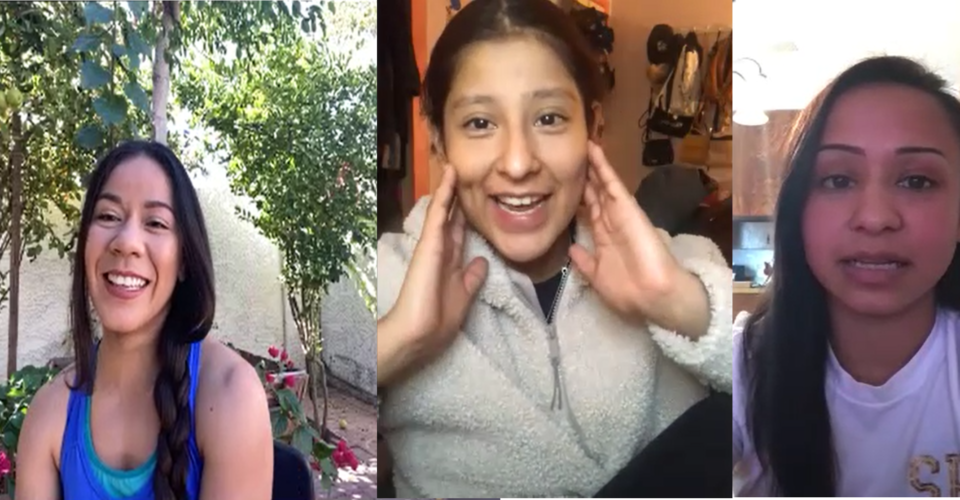Female fighters’ resilience in the age of COVID speaks volumes on the determination of the future landscape of women in boxing.
By CINDY RODRÍGUEZ
EL NUEVO SOL
COVID-19’s impact on women in boxing has revealed more of the mindset women continue to have despite not having the equal playing field as men do when it comes to bubble matchups.
Sulem Urbina’s 2020 was lined up to set the boxing world on notice. The super flyweight professional fighter started the year in February with a win against the 29th ranked Noemi Bosques at the Fantasy Springs Casino in Indio.
A bout on an Oscar de la Hoya’s Golden Boy card. Streaming on the boxing platform DAZN. With an undefeated record of 12-0.
Whatever else she had planned for after all went out the window soon after.
Urbina’s a fighter, and there’s no way she’s stopping just because a global pandemic said so. As Arizona immediately implemented restrictions, her gym was no longer available to her. So, the park it was. She now admits that she should have initially listened to her body and taken that time off. But what if the phone rang?
The pandemic’s stoppage shined light on boxing promoter’s assets. There was no longer a live gate revenue coming in so matchups in condensed bubbles with no crowds need to sell on TV. Top Rank on ESPN immediately took advantage of a boxing bubble that needed very little COVID testing to produce high-quality match-ups. Mikaela Mayer’s name would shine bright – winning her first WBO title in late October.
“A lot of fighters are taking opportunity in this,” Urbina said. “There are the small fish in the big pond like myself that are taking advantage of this time. There are fighters that are working with promoters and are willing to take less of a pay day.”
Women’s paydays are certainly not as high as their male counterparts.
The highly-anticipated bout between Vasyl Lomachenko vs. Teófimo López on October 17th recorded an audience peak of just under 3 million, according to Nielsen Media Research.
New champion López walked away with $1.25 million. Lomachenko with $3.25 million.
Irish boxer Katie Taylor earned the long-awaited million-dollar purse by a woman in August when she fought undefeated Delfine Persoon.
Mikaela Mayer’s purse for her Halloween bout was $30,000.
Pay disparities are vastly known, but in the age of COVID, fights for women weighs thin. Top Rank, Golden Boy, and Matchroom Boxing have showcased women onto their cards during the pandemic. Premiere Boxing Champions (PBC) has yet to showcase women onto their roster of elite talent.
And with the pandemic holding off fighters at the amateur level, and with an unknown official date for a summer Olympics that showcases talent emerging in the sport, questions loom about how many female fighters are holding up.
Nadia Morales started boxing when she was 14. She, too, had big plans for the year. She was turning pro. February was her marked month but her opponent didn’t want to fight her. Her target then became March. 10 years of amateurism prepared her for the moment she would make a reality as a professional in a Tijuana bout.
“Once they started closing the borders and my coach told me I wasn’t going to fight, I just cried. Cried like I have before,” Morales said 9 months since.
She skipped a semester at Riverside Community College and maintained her job at UPS. And in 2020 fashion, she hurt her tailbone while loading a cargo truck, keeping her sidelined for any training at home.
“I literally didn’t think of myself in that moment when I fell. I just thought my dream is over.”
Morales pondered the idea of getting another job, but immediately snapped out of it. She came so far and told herself that wasn’t an option. She’ll recover, and accepted the halt of starting her career. But there is no turning back now. Not even for a second.
Morales admires Mayer’s career, and hopes she too has a career as successful, and comes home to other young female fighters and prove to everyone they too can do it.
Minimumweight fighter Alexis Martinez went pro this year amidst the global pandemic. Martinez has been trying to go pro since last year but the weight class for her division is incredibly limited. She fought earlier this year and won the Central California Golden Gloves championship. Out of the blue, a Mexican promoter contacted her for her pro debut. She took it – on two days notice.
Although sanctioning bodies differ when it comes to fighters re-hydrating after weigh-ins, Martinez says she likes the challenge, and is even marked for a December 12th bout in Tijuana. Martinez says she’s found the opposite of finding fights.
“This is the most active I have been in fights. Normally, I only get two to three fights a year, and this year, I’ll have three professional fights, one amateur fight. This year have been my most active year in quite some time,” Martinez elaborated.
Urbina, 30, has known this old sport longer than Martinez and Morales. After suffering her first loss to Olympic Bronze medalist Marlen Esparza on October 30th, she’s more mindful of the fighter she is. And offers her lessons learned.
“COVID or no COVID, perseverance. As women, it’s so hard to fight. In the amateurs, you can go months without getting a fight. You can’t find somebody in your weight, you can’t find somebody in your age. But you just have to keep in mind that end goal. Take every sparring sessions like fights and learn from them.
Tags: Alexis Martinez Boxing Cindy Rodriguez Combat Sports COVID Nadia Morales Sulem Urbina











